If you like cars, there is a good chance that you like racecars. There's something about the science and the art of going faster, of competition, of achievement, that accelerates the hearts of enthusiasts. It doesn't matter the series, the team or the manufacturer – there's something about racing that stirs emotions and lifts spirits. It's that way with many of you, and it's that way with our editors.
With that in mind, we offer a list of our favorite racecars of all time. Of course, we'd like to hear some of yours in the comment section below.
1970 Porsche 917
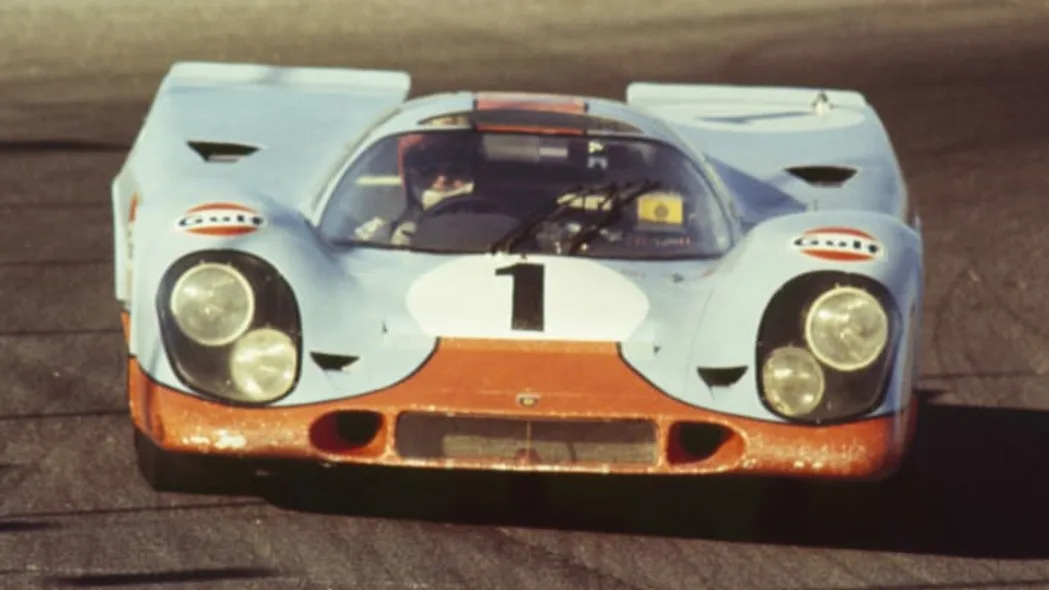
Compared to some of the obscure choices by my colleagues, I feel like the Porsche 917 is almost so obvious a pick as to not be worth mentioning. Still, when coming up with my answer, my mind invariably went back to this classic racer – specifically in its blue-and-orange Gulf livery – while watching Le Mans on DVD and later Blu Ray with my dad.
Long, low and curvaceous, few vehicles have ever looked sexier lapping a track than the 917. More than just a pretty face, this beauty had speed, too, thanks to several tunes of flat-12 engines over the course of its racing life. In the early '70s, Porsche was a dominant force throughout sports-car competition, and the 917 (shown above at the 1970 24 Hours of Daytona) was the tip of that spear, including back-to-back victories in the 24 Hours of Le Mans.
Largely without dialogue or really much of a traditional plot, Le Mans is like a tone poem of racing goodness. While the 917's importance to motorsports history is undoubtedly fascinating, it's still this cinematic depiction of the Porsche racer that draws me in most, especially with the volume cranked.
1964 Mini Cooper S
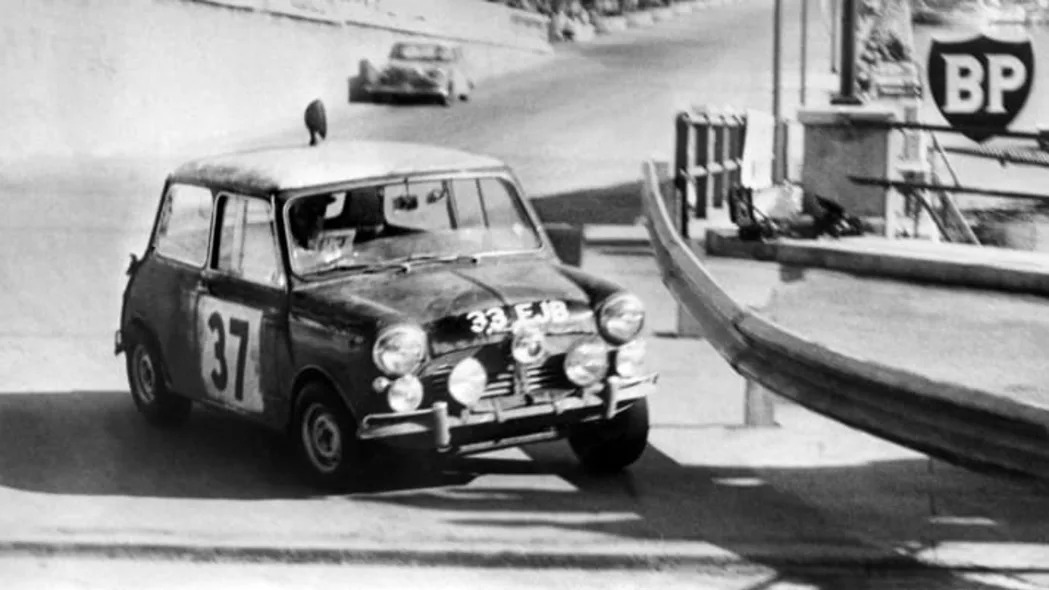
How could everyone not be selecting the 1964 Mini Cooper S piloted by Paddy Hopkirk and Henry Liddon? That car, 33 EJB, took the first of British Motor Corporation's four Monte Carlo Rally wins (it should have been five, but French judges got the British Minis [and Fords] disqualified on a technicality regarding headlights... which its own car, the winning DS, was also in violation of). The tiny red car and its white roof beat out Ford Falcons, Mercedes-Benz 300SEs and scores of Volvos, Volkswagens and Saabs.
This, along with the several years of dominance that followed, cemented the idea that not only could the tiny, two-tone Mini be a real performance vehicle, but that family-friendly city cars in general could be fun. People often think the Volkswagen GTI was the world's first hot hatch, but really, it was the original Mini Cooper S and its rally wins that created the beloved segment.

I agree with Brandon, and the 60's Mini holds magic for me. All I know about my dad's rally racing career was that he did it in Minis, in Ireland, in the late 1960s and early 1970s. I'm pretty sure he was the co-driver, and I'm pretty sure the rallies he participated in were either illegal or semi-legal. He passed away in 1996, so I can't ask, but whenever I see a 1960s Mini Cooper S I think about my dad.
The Mini Cooper S won the Monte Carlo Rally in 1964 and 1967, cementing its racing heritage. I'm pretty sure my dad wasn't racing around in a Cooper S. He and his poor college friends were probably tinkering around in a Clubman or even a used Mark I. Whatever. Until I get some real evidence of what he was actually doing in those races, I'll imagine him speeding around in a Cooper S. It's my imagination, after all.
1991 Mazda 787B
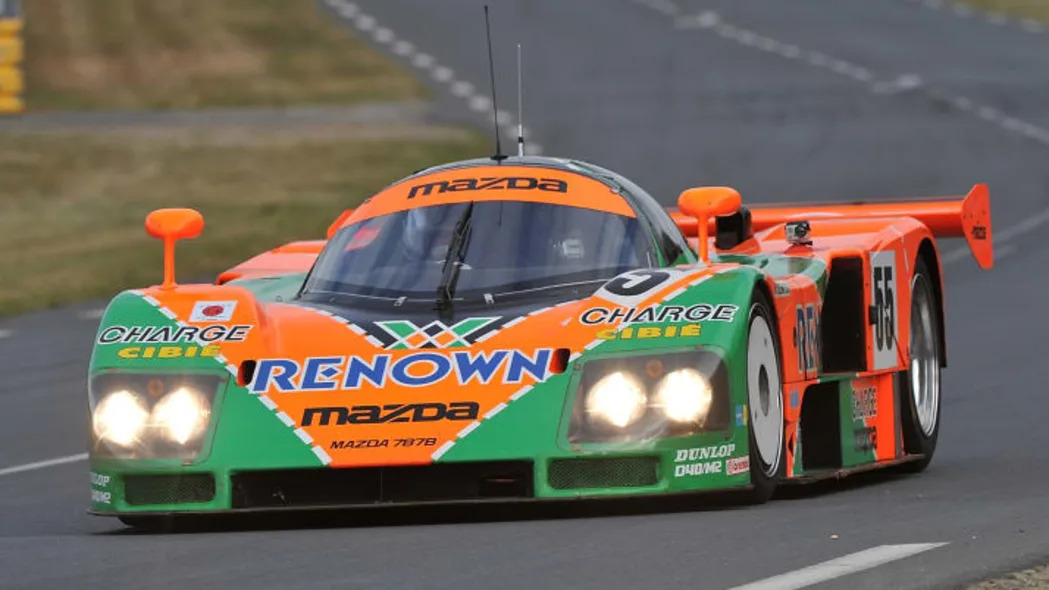
I was young and impressionable when Mazda became the first and only Japanese automaker to notch an outright victory at the 24 Hours of Le Mans in 1991, and the car with which it did so sits proudly alongside the most significant racers in the annals of motoring history. While nobody is going to argue that today's diesel- and hybrid-powered prototypes are anything other than amazing, let's not forget that Mazda is the only automaker to successfully enter Le Mans with anything other than a traditional piston engine.
Suffice it to say, the four-rotor Wankel rotary engine that powered the historic 787B was special. It produced something along the lines of 700 horsepower and 620 pound-feet of torque, and it sounded like the Devil's own buzzsaw as it overtook lesser machines over the course of its 24 hours on track. It didn't exactly dominate, but it outlasted competitors from the likes of Jaguar and Mercedes-Benz, and nothing has ever looked or sounded the same since.
2006 Audi R10 TDI
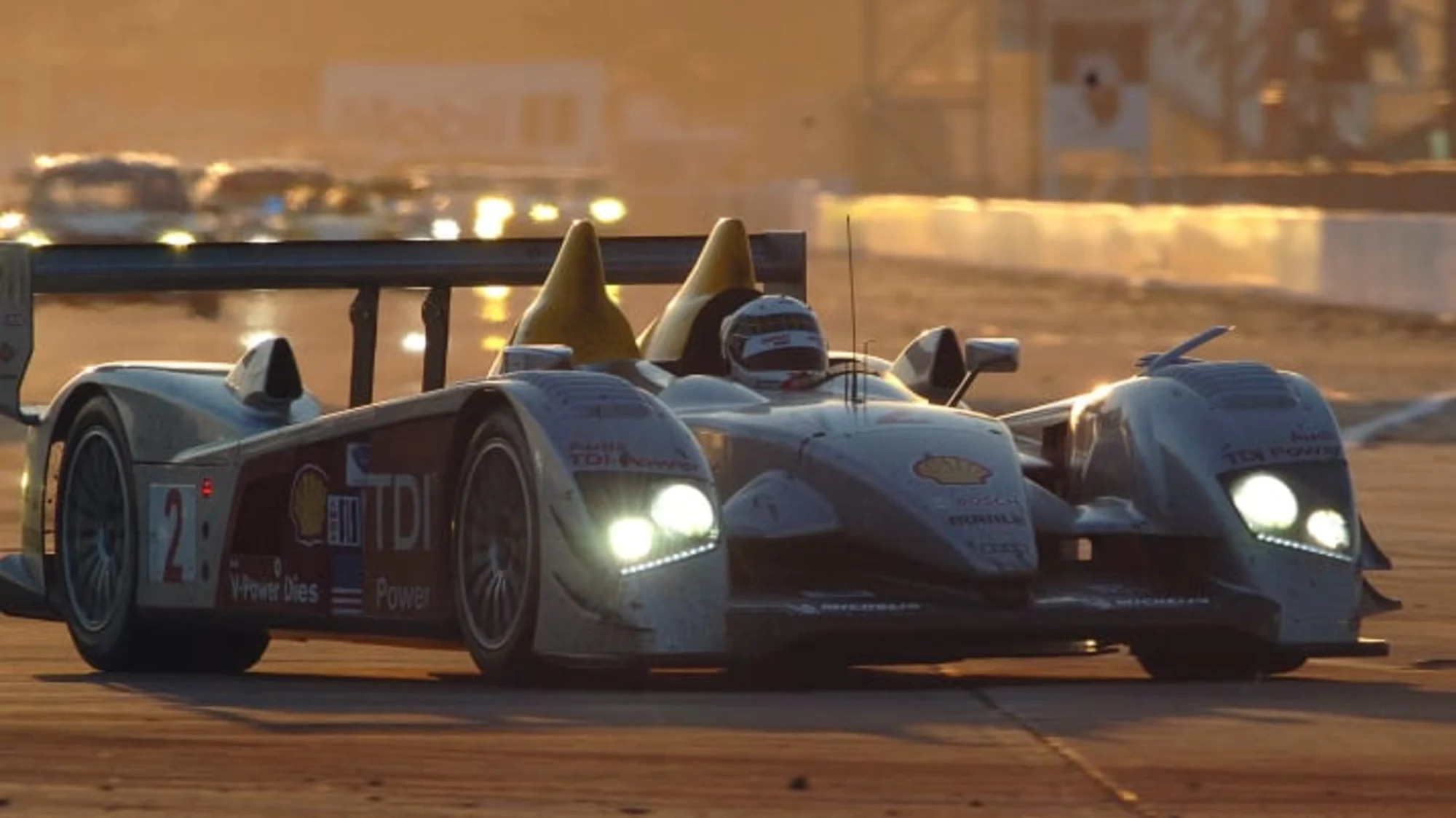
When I originally started thinking of my favorite racecar, things like gold-wheeled, rally-prepped Subarus initially came to mind, mixed with cartoon visions of the super sweet cars found in the Wacky Races. And while every other car I could list here is still totally cool (name one racecar that isn't just a little bit awesome), I'm picking what I'll argue is one of the most historically significant racers of recent decades: the Audi R10 TDI.
Le Mans is my favorite form of motorsport, and when Audi pulled the wraps off its diesel-powered R10 in late 2005, I was stunned. An oil-burning engine applied to a proper endurance racer was, to me, seriously intriguing. And as Audi has since seen, the project – estimated to cost the German company some $15 million per year – has indeed paid off. Well, maybe not financially, but victoriously, anyway.
The R10 won its debut race at the 12 Hours of Sebring in March 2006, and later won the 24 Hours of Le Mans in June of that year. Following that, the R10 won every single year at Le Mans, until it was replaced by the equally impressive R15. But because of Audi's risk to offer an alternative powertrain in Le Mans, more and more automakers have followed suit – after all, we're now seeing hybrids hitting the track at racing's most intense event.
But I'll still never forget how eerie it was the first time I saw the R10 in action, and it nearly silently raced by me, its diesel engine running at low revs, turbos wooshing it by. That car will always stand out as an important, magnificent chapter in the history of motorsport.
2012 Audi R18 E-Tron Quattro
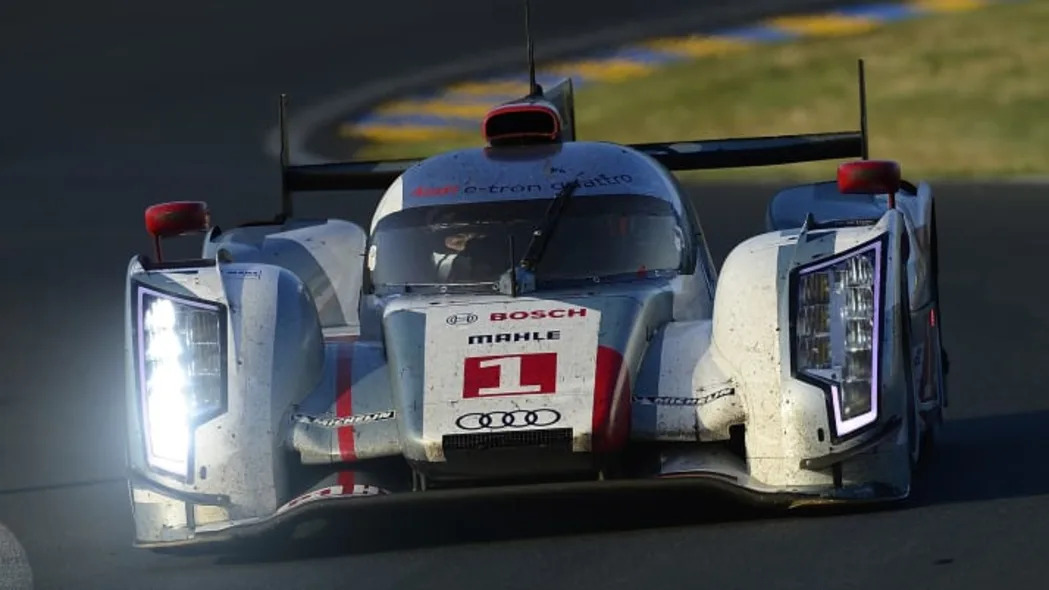
I'm going to be a bit selfish and base my selection on an amazing firsthand experience. In 2012 I had the opportunity to cover the 24 Hours of Le Mans for our Translogic blog. As someone with an expressed interest in seeing this industry move forward with greener technology, I was pleased to see hybrid and diesel tech perform so well at the annual endurance race.
As I wrote in my recap, "It just became a lot cooler to drive a hybrid. That is, if your hybrid system also includes a 510-hp direct-injected turbodiesel V6 like the one powering the rear wheels of Audi's R18 E-Tron Quattro LMP1 racecar."
Trust me, I understand this isn't the same sort of fuel-sipping hybrid system being employed in a Prius. Still, seeing a pair of tech-packed Audi R18 e-trons cross the finish line ahead of the pack felt like a tipping point for hybrid technology. To boot, the diesel-powered R18 ultra finished third.
Audi wasn't using batteries, flywheels and alternative fuels to meet some CAFE standard – it was doing so to achieve a distinct competitive advantage. It's no wonder that only a few years later, many standard-setting supercars feature some form of hybrid technology. Now if only the Audi R8 E-Tron could arrive a bit sooner...
1967 Ford GT40 MkIV

The mid-to-late 1960s Ford GT40s have always held a spell over me. It starts with their appearance. They're arguably among the most beautiful racecars of any era. Born out of the spirit of competition, they restored America's racing pride on the international circuit with four straight wins at Le Mans from 1966-1969, knocking Ferrari off its throne at a time when its cars seemed unbeatable.
I've always been drawn to the characters involved in the GT40 project. Henry Ford II was the driving force, and Carroll Shelby was the frontman. But a who's who of drivers – Bruce McLaren, A.J. Foyt, Dan Gurney, Mario Andretti and Jacky Ickx – all drove GT40s at the Circuit de la Sarthe.
I guess if I had to pick my favorite of the GT40 line, I'd take the Mk IV, which Gurney and Foyt piloted to victory at Le Mans in '67.
2012 Gymkhana 5 Ford Fiesta
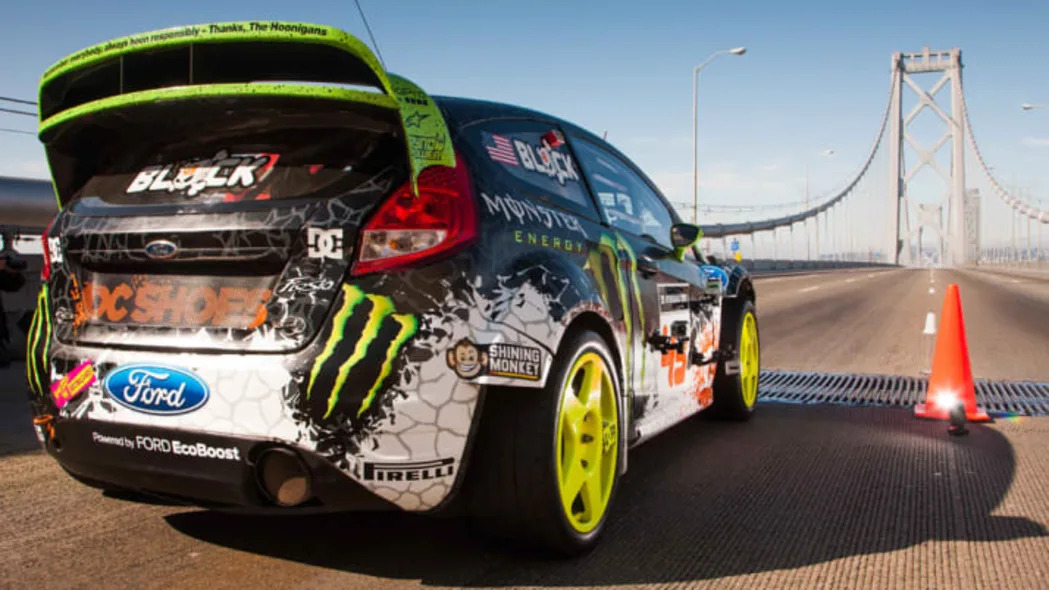
I was a sophomore in college when Ken Block's first Gymkhana video was released, and as a film student and car guy, I was blown away. Four years later Block took over the city of San Francisco for four days, replacing his Subaru WRX STI with a modified 600-hp Ford Fiesta, to create Gymkhana 5, my favorite of the Gymkhana series to date.
Block's Fiesta (which he dubbed Hybrid Function Hoon Vehicle, or HFHV) featured a 2.0-liter turbocharged engine, that produced 600 hp and 665 lb-ft of torque. It posted a 0-60 time of 1.8 seconds, making the hill climbs in Gymkhana 5 a breeze.
This car, along with the Focus ST and Fiesta ST that would soon come thereafter, sparked my love for hot hatches, and while I don't plan on mimicking the livery on my own future hatchback (the chartreuse wheels are a bit too much for me) the HFHV is still one of my favorite racecars to date.
1984 Toleman-Hart

At the 1984 Monaco Grand Prix Ayrton Senna drove one of the more remarkable second-place-finishing races of all time, compelling an utterly out-classed Toleman-Hart car past a grid of its betters in a downpour.
The Hart-powered racecar, with its 1.5-liter turbocharged four-cylinder, was anything but racing royalty. Senna's second in '84 was down to his remarkable skills (even as a rookie driver) in the wet, and Alain Prost's failing brakes, more than the prowess of Toleman engineering.
Still, the wedge-like cars of Formula One's Turbo Era are near and dear to my child-of-the-eighties heart. And the blue-and-white Candy livery of that car – spraying rooster tails of Mediterranean deluge at heroic speeds – has always seemed a perfect foil for Senna's puckish spirit and ungodly talent.
So, while the car wasn't impressive versus its contemporaries, it still thrills me as one of racing's best examples of talent beating out technology and budget. Here's to the underdogs.
Related Video:
With that in mind, we offer a list of our favorite racecars of all time. Of course, we'd like to hear some of yours in the comment section below.
1970 Porsche 917

Compared to some of the obscure choices by my colleagues, I feel like the Porsche 917 is almost so obvious a pick as to not be worth mentioning. Still, when coming up with my answer, my mind invariably went back to this classic racer – specifically in its blue-and-orange Gulf livery – while watching Le Mans on DVD and later Blu Ray with my dad.
Long, low and curvaceous, few vehicles have ever looked sexier lapping a track than the 917. More than just a pretty face, this beauty had speed, too, thanks to several tunes of flat-12 engines over the course of its racing life. In the early '70s, Porsche was a dominant force throughout sports-car competition, and the 917 (shown above at the 1970 24 Hours of Daytona) was the tip of that spear, including back-to-back victories in the 24 Hours of Le Mans.
Largely without dialogue or really much of a traditional plot, Le Mans is like a tone poem of racing goodness. While the 917's importance to motorsports history is undoubtedly fascinating, it's still this cinematic depiction of the Porsche racer that draws me in most, especially with the volume cranked.
– Chris Bruce
Associate Editor
Associate Editor
1964 Mini Cooper S

How could everyone not be selecting the 1964 Mini Cooper S piloted by Paddy Hopkirk and Henry Liddon? That car, 33 EJB, took the first of British Motor Corporation's four Monte Carlo Rally wins (it should have been five, but French judges got the British Minis [and Fords] disqualified on a technicality regarding headlights... which its own car, the winning DS, was also in violation of). The tiny red car and its white roof beat out Ford Falcons, Mercedes-Benz 300SEs and scores of Volvos, Volkswagens and Saabs.
This, along with the several years of dominance that followed, cemented the idea that not only could the tiny, two-tone Mini be a real performance vehicle, but that family-friendly city cars in general could be fun. People often think the Volkswagen GTI was the world's first hot hatch, but really, it was the original Mini Cooper S and its rally wins that created the beloved segment.
– Brandon Turkus
Associate Editor
Associate Editor

I agree with Brandon, and the 60's Mini holds magic for me. All I know about my dad's rally racing career was that he did it in Minis, in Ireland, in the late 1960s and early 1970s. I'm pretty sure he was the co-driver, and I'm pretty sure the rallies he participated in were either illegal or semi-legal. He passed away in 1996, so I can't ask, but whenever I see a 1960s Mini Cooper S I think about my dad.
The Mini Cooper S won the Monte Carlo Rally in 1964 and 1967, cementing its racing heritage. I'm pretty sure my dad wasn't racing around in a Cooper S. He and his poor college friends were probably tinkering around in a Clubman or even a used Mark I. Whatever. Until I get some real evidence of what he was actually doing in those races, I'll imagine him speeding around in a Cooper S. It's my imagination, after all.
– Sharon Carty
Editor-in-Chief
Editor-in-Chief
1991 Mazda 787B

I was young and impressionable when Mazda became the first and only Japanese automaker to notch an outright victory at the 24 Hours of Le Mans in 1991, and the car with which it did so sits proudly alongside the most significant racers in the annals of motoring history. While nobody is going to argue that today's diesel- and hybrid-powered prototypes are anything other than amazing, let's not forget that Mazda is the only automaker to successfully enter Le Mans with anything other than a traditional piston engine.
Suffice it to say, the four-rotor Wankel rotary engine that powered the historic 787B was special. It produced something along the lines of 700 horsepower and 620 pound-feet of torque, and it sounded like the Devil's own buzzsaw as it overtook lesser machines over the course of its 24 hours on track. It didn't exactly dominate, but it outlasted competitors from the likes of Jaguar and Mercedes-Benz, and nothing has ever looked or sounded the same since.
– Jeremy Korzeniewski
Managing Editor
Managing Editor
2006 Audi R10 TDI

When I originally started thinking of my favorite racecar, things like gold-wheeled, rally-prepped Subarus initially came to mind, mixed with cartoon visions of the super sweet cars found in the Wacky Races. And while every other car I could list here is still totally cool (name one racecar that isn't just a little bit awesome), I'm picking what I'll argue is one of the most historically significant racers of recent decades: the Audi R10 TDI.
Le Mans is my favorite form of motorsport, and when Audi pulled the wraps off its diesel-powered R10 in late 2005, I was stunned. An oil-burning engine applied to a proper endurance racer was, to me, seriously intriguing. And as Audi has since seen, the project – estimated to cost the German company some $15 million per year – has indeed paid off. Well, maybe not financially, but victoriously, anyway.
The R10 won its debut race at the 12 Hours of Sebring in March 2006, and later won the 24 Hours of Le Mans in June of that year. Following that, the R10 won every single year at Le Mans, until it was replaced by the equally impressive R15. But because of Audi's risk to offer an alternative powertrain in Le Mans, more and more automakers have followed suit – after all, we're now seeing hybrids hitting the track at racing's most intense event.
But I'll still never forget how eerie it was the first time I saw the R10 in action, and it nearly silently raced by me, its diesel engine running at low revs, turbos wooshing it by. That car will always stand out as an important, magnificent chapter in the history of motorsport.
– Steven Ewing
Senior Editor
Senior Editor
2012 Audi R18 E-Tron Quattro

I'm going to be a bit selfish and base my selection on an amazing firsthand experience. In 2012 I had the opportunity to cover the 24 Hours of Le Mans for our Translogic blog. As someone with an expressed interest in seeing this industry move forward with greener technology, I was pleased to see hybrid and diesel tech perform so well at the annual endurance race.
As I wrote in my recap, "It just became a lot cooler to drive a hybrid. That is, if your hybrid system also includes a 510-hp direct-injected turbodiesel V6 like the one powering the rear wheels of Audi's R18 E-Tron Quattro LMP1 racecar."
Trust me, I understand this isn't the same sort of fuel-sipping hybrid system being employed in a Prius. Still, seeing a pair of tech-packed Audi R18 e-trons cross the finish line ahead of the pack felt like a tipping point for hybrid technology. To boot, the diesel-powered R18 ultra finished third.
Audi wasn't using batteries, flywheels and alternative fuels to meet some CAFE standard – it was doing so to achieve a distinct competitive advantage. It's no wonder that only a few years later, many standard-setting supercars feature some form of hybrid technology. Now if only the Audi R8 E-Tron could arrive a bit sooner...
– Adam Morath
Executive Producer
Executive Producer
1967 Ford GT40 MkIV

The mid-to-late 1960s Ford GT40s have always held a spell over me. It starts with their appearance. They're arguably among the most beautiful racecars of any era. Born out of the spirit of competition, they restored America's racing pride on the international circuit with four straight wins at Le Mans from 1966-1969, knocking Ferrari off its throne at a time when its cars seemed unbeatable.
I've always been drawn to the characters involved in the GT40 project. Henry Ford II was the driving force, and Carroll Shelby was the frontman. But a who's who of drivers – Bruce McLaren, A.J. Foyt, Dan Gurney, Mario Andretti and Jacky Ickx – all drove GT40s at the Circuit de la Sarthe.
I guess if I had to pick my favorite of the GT40 line, I'd take the Mk IV, which Gurney and Foyt piloted to victory at Le Mans in '67.
– Greg Migliore
Senior Editor
Senior Editor
2012 Gymkhana 5 Ford Fiesta

I was a sophomore in college when Ken Block's first Gymkhana video was released, and as a film student and car guy, I was blown away. Four years later Block took over the city of San Francisco for four days, replacing his Subaru WRX STI with a modified 600-hp Ford Fiesta, to create Gymkhana 5, my favorite of the Gymkhana series to date.
Block's Fiesta (which he dubbed Hybrid Function Hoon Vehicle, or HFHV) featured a 2.0-liter turbocharged engine, that produced 600 hp and 665 lb-ft of torque. It posted a 0-60 time of 1.8 seconds, making the hill climbs in Gymkhana 5 a breeze.
This car, along with the Focus ST and Fiesta ST that would soon come thereafter, sparked my love for hot hatches, and while I don't plan on mimicking the livery on my own future hatchback (the chartreuse wheels are a bit too much for me) the HFHV is still one of my favorite racecars to date.
– Chris McGraw
Senior Producer
Senior Producer
1984 Toleman-Hart

At the 1984 Monaco Grand Prix Ayrton Senna drove one of the more remarkable second-place-finishing races of all time, compelling an utterly out-classed Toleman-Hart car past a grid of its betters in a downpour.
The Hart-powered racecar, with its 1.5-liter turbocharged four-cylinder, was anything but racing royalty. Senna's second in '84 was down to his remarkable skills (even as a rookie driver) in the wet, and Alain Prost's failing brakes, more than the prowess of Toleman engineering.
Still, the wedge-like cars of Formula One's Turbo Era are near and dear to my child-of-the-eighties heart. And the blue-and-white Candy livery of that car – spraying rooster tails of Mediterranean deluge at heroic speeds – has always seemed a perfect foil for Senna's puckish spirit and ungodly talent.
So, while the car wasn't impressive versus its contemporaries, it still thrills me as one of racing's best examples of talent beating out technology and budget. Here's to the underdogs.
– Seyth Miersma
Senior Editor
Senior Editor
Related Video:


Sign in to post
Please sign in to leave a comment.
Continue